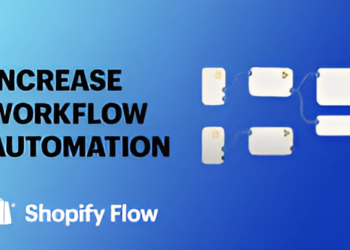“Email marketing is not dead; it’s stronger than ever, but only if you know how to wield its power effectively.” – Neil Patel
Introduction:
In the ever-evolving landscape of digital marketing, one strategy has remained a constant powerhouse: email marketing. Despite the rise of social media and other forms of digital communication, email continues to be a vital tool for businesses to connect with their audience. However, the key to success lies not just in sending emails but in crafting messages that engage, persuade, and ultimately convert. In this comprehensive guide, we’ll delve into the intricacies of email marketing tactics that convert, equipping you with the skills needed to take your campaigns to the next level.
Understanding Your Audience:
Before diving into the technicalities of crafting compelling emails, it’s crucial to understand your audience thoroughly. Every successful email marketing campaign starts with a deep understanding of who your subscribers are, what they need, and how your product or service can address those needs.
Segmentation: Segmentation allows you to divide your email list into smaller, more targeted groups based on demographics, behaviour, or preferences. By sending tailored messages to each segment, you can increase relevance and engagement, ultimately driving conversions. According to Mailchimp, segmented campaigns result in a 14.31% higher open rate compared to non-segmented campaigns.
Personalization: Personalization goes beyond simply addressing the recipient by name. It involves delivering content that speaks directly to the individual’s interests, challenges, or past interactions with your brand. Research by Experian found that personalized subject lines generate 50% higher open rates.
Crafting Compelling Subject Lines:
The subject line is the gateway to your email. It’s the first thing recipients see, and it can determine whether your email gets opened or sent straight to the trash folder. Crafting compelling subject lines is an art form that requires creativity, relevance, and a dash of psychology.
Be Clear and Concise: Keep your subject lines short and to the point, preferably under 50 characters. Clear and concise subject lines are more likely to grab attention and entice recipients to open the email.
Create a Sense of Urgency: Incorporate words that create a sense of urgency or exclusivity, such as “limited time offer” or “exclusive deal.” Urgency compels recipients to act quickly, fearing they might miss out on something valuable.
Use Personalization: As mentioned earlier, personalization can significantly impact open rates. Incorporate the recipient’s name or reference past interactions to make the email feel more personalized and relevant to their needs.
Compelling Email Content:
Once you’ve enticed recipients to open your email, the next challenge is to keep them engaged with compelling content. Whether you’re promoting a product, sharing valuable insights, or nurturing leads, the content of your email plays a pivotal role in driving conversions.
Focus on Value: Provide recipients with valuable and relevant content that addresses their pain points or interests. Whether it’s educational resources, helpful tips, or exclusive offers, the content should offer something of value to the recipient.
Use Visuals Wisely: Incorporate visually appealing elements such as images, videos, or infographics to break up the text and make the email more engaging. However, be mindful not to overload the email with visuals, as it may affect load times and deliverability.
Include a Clear Call-to-Action (CTA): Every email should have a clear and compelling call-to-action that prompts recipients to take the desired action, whether it’s making a purchase, signing up for a webinar, or downloading a resource. Make sure the CTA stands out and is easy to click.
Optimizing for Mobile:
With the majority of emails now being opened on mobile devices, optimizing your emails for mobile is no longer optional—it’s essential. Failure to do so can result in poor user experience and lost opportunities for conversions.
Responsive Design: Ensure your emails are designed responsively, meaning they adapt seamlessly to different screen sizes and resolutions. Test your emails across various devices and email clients to ensure they display correctly.
Keep it Simple: Opt for a clean and simple layout that prioritizes readability and ease of navigation on smaller screens. Avoid using tiny fonts or overcrowding the email with too much content.
Thumb-Friendly CTAs: Place your call-to-action buttons strategically, making them easily clickable with a thumb or finger. Leave enough space around the CTA to prevent accidental clicks on surrounding elements.
Testing and Optimization:
Even the most meticulously crafted emails can benefit from testing and optimization. A/B testing, also known as split testing, allows you to compare different elements of your emails to see which versions perform better in terms of open rates, click-through rates, and conversions.
Test Subject Lines: Experiment with different subject lines to see which ones resonate best with your audience. Test variables such as length, tone, and personalization to identify the most effective approach.
Test Content and Layout: Try different layouts, content formats, and visual elements to see what captures the attention of your audience. Testimonials, product images, and user-generated content are just a few elements you can experiment with.
Test Send Times: The timing of your email can have a significant impact on its performance. Test different send times and days of the week to determine when your audience is most responsive.
Conclusion:
Email marketing remains one of the most powerful tools in the digital marketer’s arsenal, but success requires more than just sending mass emails and hoping for the best. By understanding your audience, crafting compelling content, optimizing for mobile, and continuously testing and optimizing your campaigns, you can enhance your email marketing skills and drive meaningful conversions for your business.
In an era where attention spans are fleeting and competition for inbox space is fierce, mastering these tactics is essential for staying ahead of the curve. So, roll up your sleeves, experiment, and refine your approach to email marketing. Your audience—and your bottom line—will thank you for it.
Feel free to share this guide with fellow marketers and sales professionals who are looking to elevate their email marketing game. Together, let’s unlock the full potential of this enduringly effective marketing channel.


















